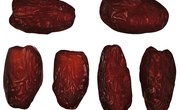Punctuating a series is a simple aspect of sentence construction, but there's a surprisingly fierce debate at the heart of it. The serial comma, or Oxford comma, is the comma that sometimes goes between the final two items in a series. In some circles, such as business communications and book publishing, the serial comma is generally used. In other circles, such as journalism and British English, the serial comma is often omitted. Either method is correct, so long as the same method is used throughout a piece of writing or a publication.
Step 1
Write a sentence with a series in it. For example: "John went to the store to buy bananas cherries milk and cheese."
Step 2
Place a comma between each item in the series. For example: "John went to the store to buy bananas, cherries, milk, and cheese." The comma in front of "and cheese" is optional, though whatever option you choose, keep choosing that option in any future series.
Step 3
If the items in your series are extremely long or contain commas themselves, use semicolons instead. For example: "John decided to travel to Tulsa, Oklahoma; Seattle, Washington; Denver, Colorado; and Detroit, Michigan." In this case, always use the final semicolon before the "and" in order to differentiate between the list items.
Tip
If you're writing for a specific publication or business, you can request a style guide that will provide instructions on that organization's use of the serial comma.
Warning
Never place a comma or semicolon between a list that is only two items long. Two items are not considered a true series.
Related Articles
References
Tips
- If you're writing for a specific publication or business, you can request a style guide that will provide instructions on that organization's use of the serial comma.
Warnings
- Never place a comma or semicolon between a list that is only two items long. Two items are not considered a true series.











